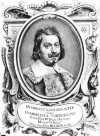 An Italian physicist and mathematician, Torricelli served as secretary to Galileo during the last three months of Galileo’s life. Two years later, pursuing a suggestion by Galileo, he filled a glass tube with mercury and inverted the tube into a dish. He noted that some of the mercury did not flow out and that the space above the mercury was a vacuum. He concluded that the variation of the height of the mercury from day to day was caused by changes in atmospheric pressure. What had he invented? Discuss
An Italian physicist and mathematician, Torricelli served as secretary to Galileo during the last three months of Galileo’s life. Two years later, pursuing a suggestion by Galileo, he filled a glass tube with mercury and inverted the tube into a dish. He noted that some of the mercury did not flow out and that the space above the mercury was a vacuum. He concluded that the variation of the height of the mercury from day to day was caused by changes in atmospheric pressure. What had he invented? Discuss
Source: The Free Dictionary
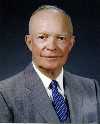 Eisenhower was the 34th president of the US. During WWII, he successfully commanded US forces in the invasions of Sicily and Italy. He was then appointed supreme commander of Allied forces and planned the Normandy Campaign and the war in Europe until the German surrender. After the war, both Democrats and Republicans courted him as a presidential candidate. He was elected as a Republican in landslide elections in 1952 and 1956. What famous warning did he issue in his final presidential address?
Eisenhower was the 34th president of the US. During WWII, he successfully commanded US forces in the invasions of Sicily and Italy. He was then appointed supreme commander of Allied forces and planned the Normandy Campaign and the war in Europe until the German surrender. After the war, both Democrats and Republicans courted him as a presidential candidate. He was elected as a Republican in landslide elections in 1952 and 1956. What famous warning did he issue in his final presidential address?  Born on the Isle of Jersey, Emilie Charlotte Le Breton married diplomat Edward Langtry in 1874. A famous beauty, she caused a sensation when she became the first society woman to go on the stage, making her debut at the Haymarket theater in 1881 after her husband failed financially. “Jersey Lily,” as she became known, played to enthusiastic audiences in England and the US and later remodeled and managed London’s Imperial Theatre. With what future monarch was Langtry once romantically involved?
Born on the Isle of Jersey, Emilie Charlotte Le Breton married diplomat Edward Langtry in 1874. A famous beauty, she caused a sensation when she became the first society woman to go on the stage, making her debut at the Haymarket theater in 1881 after her husband failed financially. “Jersey Lily,” as she became known, played to enthusiastic audiences in England and the US and later remodeled and managed London’s Imperial Theatre. With what future monarch was Langtry once romantically involved? 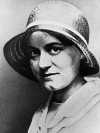 Born into an observant Jewish family, Stein converted to Christianity in 1922. After studying philosophy, she became a nun in 1934. She moved from Germany to the Netherlands to avoid Nazi persecution, but in 1942 she was arrested because of her Jewish heritage. She was sent to the Auschwitz concentration camp and died in the gas chamber that year. She was canonized by Pope John Paul II in 1998 and is also known as Saint Teresa Benedicta of the Cross. With what miracles is Stein credited?
Born into an observant Jewish family, Stein converted to Christianity in 1922. After studying philosophy, she became a nun in 1934. She moved from Germany to the Netherlands to avoid Nazi persecution, but in 1942 she was arrested because of her Jewish heritage. She was sent to the Auschwitz concentration camp and died in the gas chamber that year. She was canonized by Pope John Paul II in 1998 and is also known as Saint Teresa Benedicta of the Cross. With what miracles is Stein credited? 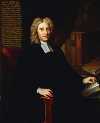 Clarke was an English philosopher and clergyman who advocated the theories of Isaac Newton. Clarke maintained that ethical law is as constant as mathematical law. His published works include many translations, lectures, sermons, and commentaries. In 1717, his correspondence with German philosopher Gottfried Leibniz was published. In it, he argues with Leibniz in defense of the existence of absolute space—physical space independent of what occupies it. Why did their discussion abruptly end?
Clarke was an English philosopher and clergyman who advocated the theories of Isaac Newton. Clarke maintained that ethical law is as constant as mathematical law. His published works include many translations, lectures, sermons, and commentaries. In 1717, his correspondence with German philosopher Gottfried Leibniz was published. In it, he argues with Leibniz in defense of the existence of absolute space—physical space independent of what occupies it. Why did their discussion abruptly end? .jpg) One of the key innovators of modern jazz, Monk worked as a pianist in the early 1940s at Minton’s Playhouse and other clubs where the rudiments of the new jazz style were being developed. Known for his highly idiosyncratic, percussive playing, he performed with many notable jazz musicians, including Dizzy Gillespie, before recording under his own name beginning in 1947. Monk is one of only five jazz musicians to have been featured on the cover of Time magazine. Who are the other four?
One of the key innovators of modern jazz, Monk worked as a pianist in the early 1940s at Minton’s Playhouse and other clubs where the rudiments of the new jazz style were being developed. Known for his highly idiosyncratic, percussive playing, he performed with many notable jazz musicians, including Dizzy Gillespie, before recording under his own name beginning in 1947. Monk is one of only five jazz musicians to have been featured on the cover of Time magazine. Who are the other four? 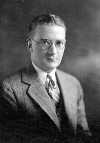 Born in New York City, O’Malley was the owner of the Brooklyn and Los Angeles Dodgers baseball team from 1950 to 1979. In 1958, he moved the Dodgers from Brooklyn to Los Angeles and helped to coordinate the move of the New York Giants to San Francisco at a time when there were no teams west of Missouri. Though ultimately successful, the transplantation of the Dodgers made O’Malley a target of vilification by Brooklyn fans. However, some blame what powerful official for the team’s move?
Born in New York City, O’Malley was the owner of the Brooklyn and Los Angeles Dodgers baseball team from 1950 to 1979. In 1958, he moved the Dodgers from Brooklyn to Los Angeles and helped to coordinate the move of the New York Giants to San Francisco at a time when there were no teams west of Missouri. Though ultimately successful, the transplantation of the Dodgers made O’Malley a target of vilification by Brooklyn fans. However, some blame what powerful official for the team’s move? 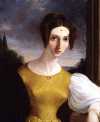 Harriet Taylor Mill was a philosopher and women’s rights advocate who is largely remembered for the influence she had on her second husband, John Stuart Mill, one of the preeminent thinkers of the 19th century. The two met while Harriet was still married. Two years after her first husband died, Harriet and John married following a 20-year friendship. She read and commented on all of his material, and he considered her an equal collaborator. What essays did Harriet write during their marriage?
Harriet Taylor Mill was a philosopher and women’s rights advocate who is largely remembered for the influence she had on her second husband, John Stuart Mill, one of the preeminent thinkers of the 19th century. The two met while Harriet was still married. Two years after her first husband died, Harriet and John married following a 20-year friendship. She read and commented on all of his material, and he considered her an equal collaborator. What essays did Harriet write during their marriage? 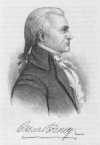 Rodney was a key American Revolutionary leader. As a member of the Continental Congress, when he heard of the deadlock on the vote for independence, he rode 80 miles through a thunderstorm to arrive in Philadelphia “in his boots and spurs” on July 2, 1776—just in time to cast the decisive vote in favor of independence. The wording of the Declaration of Independence was approved two days later, and Rodney became a signatory on August 2. Soon after, he was elected president of what?
Rodney was a key American Revolutionary leader. As a member of the Continental Congress, when he heard of the deadlock on the vote for independence, he rode 80 miles through a thunderstorm to arrive in Philadelphia “in his boots and spurs” on July 2, 1776—just in time to cast the decisive vote in favor of independence. The wording of the Declaration of Independence was approved two days later, and Rodney became a signatory on August 2. Soon after, he was elected president of what? 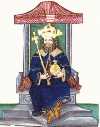 Wenceslaus III was king of Bohemia and of Hungary. Unable to assert his authority in Hungary, even with the help of his father, Wenceslaus II, he relinquished his claim to Duke Otto of Bavaria in 1305. He attempted to assert his hereditary claim to the Polish crown but was assassinated while marching to Poland. After an interregnum, John of Luxemburg, who married Wenceslaus’s sister, was elected king of Bohemia. Wenceslaus III was the last member of what dynasty?
Wenceslaus III was king of Bohemia and of Hungary. Unable to assert his authority in Hungary, even with the help of his father, Wenceslaus II, he relinquished his claim to Duke Otto of Bavaria in 1305. He attempted to assert his hereditary claim to the Polish crown but was assassinated while marching to Poland. After an interregnum, John of Luxemburg, who married Wenceslaus’s sister, was elected king of Bohemia. Wenceslaus III was the last member of what dynasty?